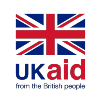In my role working with children and young people who have been affected by child marriage, I am evaluating child-led advocacy and reflecting on common narratives around childhood. One such narrative is highlighted in the BBC article ‘Obama, Clooney and Gates ‘We Can End Child Marriage in a Generation’ which, I believe, is challenged by the experience of a group of girl advocates and researchers in Bangladesh who produced a short advocacy film on child marriage.
A common narrative on child marriage
Child marriage was an issue girl advocates and researchers working as part of the CLARISSA (Child Labour: Action-Research-Innovation in South and South-Eastern Asia) programme had identified as a key driver of child labour in the leather sector in Dhaka. Child marriage is contentious in Dhaka, consequently the girls’ names and identities are obscured in the film. Nonetheless their messages challenge some of the assumptions in the BBC article and highlight the importance of incorporating children’s lived realities into prevention messages.
The BBC article rightly celebrates and champions women’s efforts in combatting child marriage in Eastern and Southern Africa – Malawi has one of the highest child marriage rates in the region, with 42% of girls already married by the age of 18. In the article, Malawian campaigner, Lucy, calls for girls to be ‘spared the fate of marriage to much older men’ – reflecting a common narrative on child marriage where girls are forced into marriage with older men by their parents. This narrative is behind much of the prevention campaigns and strategies to end child marriage, which tend to focus on the health risks of early marriage and pregnancy.
Challenging narratives through CLARISSA
Our experience in Bangladesh, however, draws different conclusions and suggests that to be truly effective, prevention messaging needs to be based in children’s lived realities. Through participatory action research with children who have lived experience of working in the leather sector, girl researchers and advocates in CLARISSA explored the links between child marriage and child labour in Bangladesh. When it came to prevention messaging on child marriage, girl researchers from CLARISSA drew on the evidence from life-story interviews with 400 children and action research with their peers, and prioritised economic hardships over the health risks associated with child marriage. They said that despite prevention efforts where they were “hearing about the health effects of child marriage since childhood” they wanted to highlight the economic hardship they faced when getting married early. From their own research with peers and parents, they found that rather than being forced into a marriage with an older man, girls in Bangladesh often run away with boyfriends of the same age and get married on their own. Their elopement means, however, that the girls’ marriages are not supported by their parents, or their extended family and they find themselves in financial difficulties – especially if they fall pregnant as there is no-one to help with childcare. It is these financial hardships and lack of support from family members which eventually lead to the labour exploitation of girls in the leather workshops of Dhaka.
Consequently, in the advocacy film, girl researchers call for prevention strategies with their peers – who are at risk of child labour – that incorporate their lived realities, and focus on “life-oriented information” about child marriage “so that people can relate to it and understand it”. This would mean re-framing prevention messaging with adolescent girls to focus on the financial hardship caused by child marriage rather than the health risks. This re-framing by girl advocates aligns with feminist scholars’ who claim that the investment by government donors in girls’ education as a way of postponing motherhood does not recognise that the key structural problem facing teenage mothers is poverty rather than parenthood.
Responding to realities
Michelle Obama, Amal Clooney and Melinda French Gates say their respective organisations will back in-country organisations that have been working with communities for years. Let’s hope that this support includes listening to and acting on the lived experiences of girls themselves and, consequently, responding to their realities on the ground.
